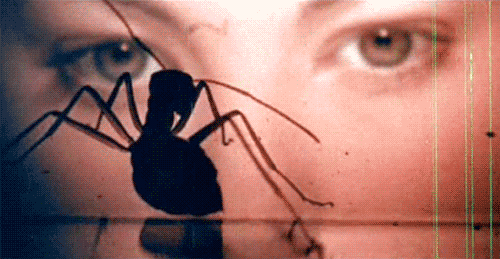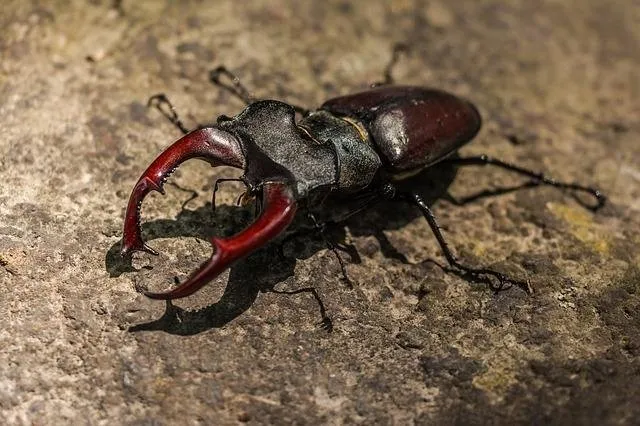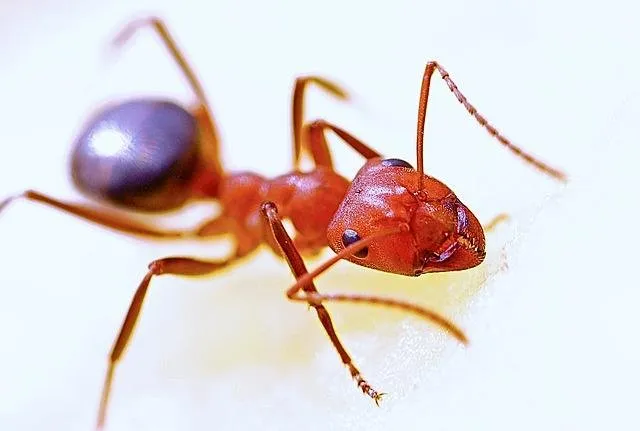
Credits: giphy.com
Worried about a zombie apocalypse happening in the future? Or maybe being troubled by the fast advancement in technology, giving birth to smarter A.I.'s?
Science fiction has been pricking the curious mind of humanity for these last decades. But what if one fiction fantasy happened earlier, just some million years ago.
What if a glitch happened in the evolutionary process some n million years ago that had altered the genes of the organisms at that particular time interval?
What if in some point of time, the insects had evolved larger than their current sizes or worse, larger than us?
What will happen to humanity? Or a more appropriate question is, will humans still exist?
We will answer that questions, but for now let us dive a little bit deeper into the insect kingdom.
Before anything else we will try to learn more about these critters the simplest way possible.
Insects falls under the Phylum Anthropoda, Sub Phylum Hexapoda (Jointed legs + compounded eyes, six legs) of the animal kingdom.

Canthigaster cicada, pixabay.com
The most common trait shared by almost all insects is their very sturdy exoskeleton. In human terms, a fully pledged bullet proof armor.
One of the oldest insects are the beetles whose ancestor remains dated way back 300 million years ago.

A common stag beetle, pixabay.com
The most popular prehistoric critter which is often illustrated in encyclopedias and science books is the giant dragonfly, whose wing is estimated to reach up to 28 inches.

A modern dragonfly, pixabay.com
Given we are in the same time frame and they are as big as us, how can we compare to them?
Its quite difficult to answer this because of diversity, so let's pick the most common insect and try to scale it to human proportions.
An ant, pixabay.com

An average ant can carry things 10 - 50 times heavier than himself and run 800 times its body's length in a minute (52mph).

The reigning strongest weight lifter in the world is Alexey Rochev of Russia who set a record of 264 kg in 2015 can carry a weight less than 3 times his body weight.
It will take more than 3 Alexey's to beat the most common ant in strength.
Usain Bolt can run up to 28 mph, 2 times slower than that of an ant

We would lose?
Well not really. Why? Because of math and biology the ant will die in suffocation and will become cripple.

Let me explain, let us assume an ant as a 3 dimensional die, which sides(l) are measured as unit s. The formula for surface area(sa) is side x side while volume(v) is side x side x side. Applying these we have: l=s, sa=s^2 and v=s^3.
Next let us take s=1 as the length of one side prior to scaling. Substituting to the formula above we have: l=1, sa=1 and v=1
Then we choose the scaling factor. Scaling factor is basically how many times you want to scale it. Do you want it to be two times larger or n times larger? Let us just use s=2 and apply the formula. After scaling we have: l=2, sa=4 and v=8.
The most important thing in the computation is to compare the sa:v ratio of the ant prior to and after scaling. Prior to scaling has a sav ratio of 1:1 (1/1, highest sa:v ratio possible), after scaling it becomes 4:8 or 1:2 (1/2, half the original sa:v). It is evident that the sa:v ratio change, which is a very big problem biologically speaking.

Humans and other vertebrates breathe through their lungs, an organ which has a very high sa:v ratio. It means that vertebrates can intake as much oxygen as needed.

Unlike man and other vertebrates, insects have difficult times because they breathe through spiracles, an organic mechanism which has a very low sa:v ratio (very thin). It only means that if we up scaled an ant, its spiracles will eventually not be able to support it with oxygen. It will die due to suffocation.
The same principle applies in the limbs. It also needed high sa:v ratio. The more massive an animal is the more wider its legs should be. Some good examples are the elephants and rhinos. In the case of the up scaled ant, its legs will break.
This also applies in almost all insects when up scaled.
In conclusion, unless insects evolved their spiracles, legs and other organs in their bodies to have high sa:v, insects if scaled to human proportions will eventually die either by suffocation or being crushed by their own weight. They would not be threats to humanity

References:
.
Thank you for reading!
.
If you enjoy what you are reading, you can read my other works too. Please do follow me @lordkingpotato
Thank you very much :)